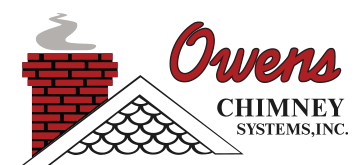A chimney inspection is important, and at the same time necessary. These inspections should be performed by people who have the CSIA Certified Chimney Sweep credential. The National Fire Protection Association (NFPA) recommends a three level chimney inspection. With the increase in levels, the inspection gets more detailed. However, the first level of inspection is considered mandatory before sweeping and cleaning a chimney.
Now let’s take a look at the three different levels:
Level 1 is very basic and can be considered more of a routine check. This level of inspection is helpful when the chimney is used over a continued period of time, and the functioning conditions have not changed. These are mostly annual checks of the venting system. Before the cleaning process starts, it is extremely important to perform the level 1 check. Even though this inspection gives a fair idea of what the chimney looks like, it is limited to only the accessible parts of the chimney, and the enclosing structure. This level of inspection reveals whether the flue is blocked or restricted.
Level 2 is obviously more detailed than level 1, and is recommended anytime a user decides to change the venting system or when level 1 inspection shows the need to have a more detailed check to ensure safety. We recommend a level 2 inspection before relining the flue, in the event it is a newly bought property, if a part of an appliance is being replaced, to determine the efficiency of the chimney, and definitely if there has been an accident like a chimney fire. This level of inspection focuses on the accessible parts of the chimney vent, the attics, basements, interiors of the chimney, its connections, construction structures of the chimney, flue interior, and the combustible zones in and around the chimney. Since this check is more detailed, it gives a clear understanding of the ups and downs surrounding the chimney. However, it does not involve removing any permanent part of the building.
Level 3 is the most thorough stage of inspection. Both the prior levels are included in this phase. Here even the concealed areas are focused on to see if there s any damage. If there is a suspected problem, then it is advisable to conduct this check so that hazardous situations can be avoided.
These inspections are extremely necessary for the safety and security of the inhabitants of the house.
